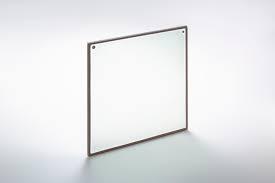
In our quest for sustainable living and energy efficiency, advancements in technology continue to play a pivotal role. One such innovation that is making waves in the architectural and construction industry is Vacuum Insulated Glass (VIG). This revolutionary glass technology is transforming the way we think about insulation, thermal performance, and energy conservation. In this blog, we will delve into the fascinating world of Vacuum Insulated Glass and explore its benefits, applications, and potential impact on the future of sustainable design.
Understanding Vacuum Insulated Glass
Vacuum Insulated Glass, also known as VIG, is a cutting-edge glazing solution that goes beyond traditional double or triple glazing. At its core, VIG consists of two or more glass panes, hermetically sealed together at the edges, with a thin, evacuated space or vacuum in between. This vacuum acts as an exceptional insulator, dramatically reducing heat transfer through the glass and providing superior thermal insulation properties.
Benefits of Vacuum Insulated Glass
Enhanced Energy Efficiency: One of the most significant advantages of VIG is its exceptional thermal insulation capabilities. The vacuum gap between the glass panes effectively eliminates heat conduction, resulting in reduced energy consumption for heating and cooling purposes. Buildings incorporating VIG can significantly lower their energy usage, leading to substantial cost savings and a reduced carbon footprint.
Superior Soundproofing: Vacuum Insulated Glass offers remarkable soundproofing capabilities due to its multi-layered composition. The vacuum layer acts as an acoustic barrier, reducing the transmission of external noise and creating a peaceful and quiet indoor environment. This benefit is particularly advantageous for buildings located in noisy urban areas or near transportation hubs.
Thin and Lightweight: Compared to traditional double or triple glazing, VIG is relatively thin and lightweight. Its slim profile allows for sleek and contemporary designs while maintaining optimal thermal performance. The reduced weight also eases the load on building structures, enabling architects and engineers to explore new possibilities in design and construction.
Condensation Prevention: Vacuum Insulated Glass effectively eliminates the formation of condensation on the interior glass surface. The absence of air or moisture between the panes prevents condensation from occurring, ensuring clear views and maintaining the aesthetics of the building.
Applications of Vacuum Insulated Glass
Residential Buildings: VIG is gaining popularity in the residential sector, where homeowners seek energy-efficient solutions for their homes. Its exceptional insulation properties help maintain comfortable indoor temperatures, reduce energy bills, and enhance overall living conditions.
Commercial Buildings: In commercial buildings such as offices, hotels, and retail spaces, VIG can contribute to creating a comfortable and productive environment. By reducing the need for excessive heating or cooling, businesses can improve their energy efficiency and reduce operating costs.
Historical Preservation: Vacuum Insulated Glass also offers a solution for preserving historical buildings. It allows architects to upgrade the energy performance of these structures without compromising their original aesthetics. VIG provides an effective balance between preservation and modernization.
High-performance Buildings: With the growing demand for green and sustainable construction, VIG is becoming an integral part of high-performance buildings. Its exceptional thermal insulation capabilities align with the objectives of achieving energy efficiency and reducing environmental impact.
The Future of Vacuum Insulated Glass
As sustainability becomes increasingly important, Vacuum Insulated Glass is poised to play a significant role in the future of architecture and construction. Continued research and development in the field are likely to result in further advancements, including improved thermal performance, larger glass sizes, and enhanced durability.
Moreover, the integration of smart technologies, such as solar control coatings, electrochromic or thermochromic glazing, and self-cleaning capabilities, could further enhance the functionalities of Vacuum Insulated Glass.